|
Slithery, scaly, silky creatures with no legs; snakes are plentiful around the earth. There are many types of snakes. However, it is important to know what type of snake you are dealing with. Several thousand Americans are bitten by snakes every year. Some snakes are venomous and some are not, but it makes you wonder how do you tell the difference? Venomous or Non-venomous One of the first things you might notice about a snake is it's color. Color is helpful feature to help you determine whether a snake is dangerous or not. In North America, there are four common types of snakes: the Rattlesnake, Copperhead, Coral Snake, and Cottonmouth Moccasin. Snakes usually blend in with their environments, and you need to be observant when you find a snake. Knowing the difference in behavior can help you tell if the snake is poisonous or not. Rattlesnakes for instance, will shake their tails to ward off and warn possible predators. Other venomous snakes such as copperheads and cottonmouths usually live near bodies of water. Head shape and eye features is another detail that can help you tell if the snake is potentially dangerous or not. Non-venomous snakes usually have round heads and have round pupils. Poisonous snakes however usually have triangular heads and their eyes have a vertical thin black pupil. Additionally, sometimes poisonous snakes exhibit holes between their eyes and nostrils. Those holes are used for radiation detection to aid them in survival. What to Do If You're Bitten:The first thing you should do if you are bitten, is to seek medical assistance. If you know what type of snake you were bitten, this information can help you gauge the risks of the bite. Additionally, if it is venomous, you should call the police or have someone take you to the hospital as soon as possible. Do not try to suck out the venom or cut the wound, because it could get into your bloodstream. What To Do About Snakes:When encountering a snake, you should always be cautious. Make sure to be extra careful especially if it is venomous. To get rid of a snake, you can gently push the snake outside with a broom or mop. Another way to get rid of a snake is to place a bucket, pot, or wastebasket over the snake with a weight on top, and call pest control. Keeping a snake in one room and blocking off exit points are also a good idea if you would rather wait for someone who can handle it.
0 Comments
Carpenter ants break down your house rather than building it up. They will make their presence known at your house. At first, you might notice small wood shavings and tiny holes. If you don't catch them for a long time then your house might be victim to structural damages. It makes you wonder what they look like, how they do it, and what you can do to stop it. What Are Carpenter Ants?Carpenter ants can be an array of colors. Some colors including yellow, brown, red, orange, and black. Most carpenter ants are black, but the color differs depending on what species you're looking at. In the United States, they are one of the largest ants that you can find. Additionally, carpenter ants can grow wings, which is unsettling but cool to think about. If you see a carpenter ant with wings, then that is an indicator that there is a large colony nearby. Carpenters and Their WoodworkCarpenter ants, unlike termites, do not destroy wood. They simply create tunnels, and those tunnels weaken wood. The more tunnels you have in your wood, the more unsound it becomes. If the colony grows or the wood continues to be damaged then the house's structure can be damaged. How Carpenter Ants Live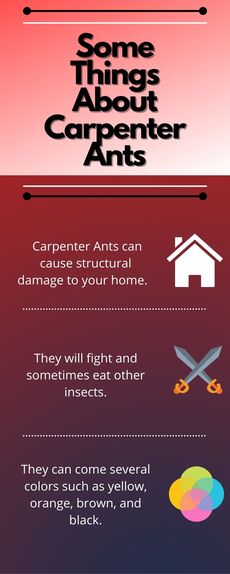 Do you ever see wet, soggy, or broken-down wood? Damaged or moist wood is a perfect place for carpenter ants to build their nest. They could be located in damaged wood, debris, or on top of that overhanging limb that touches your roof. Carpenter Ants can live inside or outside. Those dying decaying tree stumps? They can live there. The doorway in your home and your windows? They can live there too. It is important to remember that moist or damaged wood is a part of their optimal living conditions. Those woodworkers also will search for food, make rustling noises as they walk through your house, and pull shavings from the dusty wood along with them. They colonize in two different ways. They can be parent or satellite colonies. The parent colony is where workers and queens live. In satellite, colonies reside workers, larvae, and pupae. Satellite colonies exist because they need more space, food, or water. Carpenter Ant's DefensesCarpenter ants are capable of biting as well as releasing a chemical to protect themselves and their colony. Not only that but carpenter ants will fight other insects as well. For instance, they will fight termites. Termites and Carpenter Ants both use wood to live but in different ways. It only makes sense that they would eventually encounter each other. When they do encounter each other, carpenter ants would kill and sometimes eat enemy termites.
Pests are unwanted plants or animals that can damage your landscape. Pests can carry disease, destroy vegetation, harm animals, cause structural damage, and infest your home. The effects that pests have on your lawn and home can be an eyesore. Pesticides are compositions of things that are made to deter, exterminate, or repel unwanted pests. Types of pesticides and what they are used for: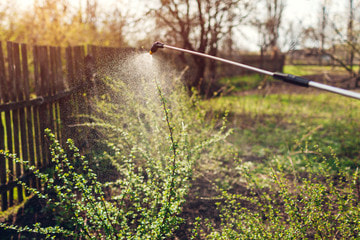 Pesticides can be gaseous, solid, liquid, or granulated. Insecticides are used to exterminate bugs. Herbicides are used to get rid of unwanted plants. Fungicides are used to remove unwanted fungi. Larvicides eradicate larvae. Bactericides are used to eliminate bacteria. Lastly, there are rodenticides that get rid of unwanted animals like moles, voles, rats, and mice. Complications of Pesticides in AnimalsPesticides, however, can be harmful to the animals around you. Pesticides can make your animals irritated or ill when they inhale or consume these chemicals. Example problems may include vomiting, drooling, nausea, reparatory complications, seizures, arrhythmia, comas, and diarrhea. Some pesticides can even kill your animal if they are ingested or cause complications for hormone production. Treatment and RecoveryIf your animal comes into contact with any harmful pesticides you should bring them to the vet immediately. Treatment for animals depends on how they came into contact with the pesticides. If they came into contact with any part of the fur than removing the residue is important. If it was ingested in any way, you may have to induce vomiting or get prescription medication. If your animal is undergoing any respiratory complications, than they may have to undergo oxygen therapy. Recovery will depend on the amount ingested by the animal. How to protect your animals from pesticides:If you are using pesticides be sure to follow the instructions carefully. Make sure that animals are removed from the area before spraying or applying pesticides. Remember not to spray pesticides when it is windy because they can spread to unwanted areas. Biodegradable pesticides are also better for your yard, because there is not as much residue that is left over time.
Rats and mice in your home are a major health problem. Call (225) 414-2020 today for professional rodent control in the Baton Rouge area. Rodent activity increases dramatically in the fall and winter since they have reduced food and heat sources. Additionally, stay-at-home orders and restaurant closures have rodents scrambling to find new places to eat. Your house has food, water, and heat, making it a nice place for your uninvited guest. As the temperature drops, be on the lookout for signs of rodents.
How to tell if you have mice or rats in your house? #1 - Everybody poops Mice and rats leave a lot of droppings wherever they spend time. Look for them near food packages, in drawers, under sinks, and along any runs where the rodent may walk to get between their water and food sources. #2 - Lots of bite marks Mice and rats chew on everything. Look for bite marks on food and on the walls and cupboards of your home. Little marks for mice. Big marks for rats. #3 - It stinks Rodents give off a stale smell. If you have a pet cat or dog that takes a sudden interest in a spot in your home they never cared about before, its worth searching for rodents. Pets can smell things you can't, so they will start behaving strangely first. If you can smell it, the problem may be a full rodent infestation. #4 - Noises and scratches You can hear scratching, gnawing, squeaking, and chirping. Rodents move around and make a lot of small noises. If you hear new noises in your walls or attic, alert your pest control professionals to handle the rodent problem #5 - You see their nest If you see a nest in your home made of shredded paper, plants, and other things, you're staring at a rodent nest. The only more obvious sign is if you outright see one scurry in front of you.
How to control biting gnatsThese are the steps you should take to reduce biting gnats around your home:
Spring is nature's alarm clock for insects. As the days start warming up, the bugs being coming out. Most of the insects that show up this time of year don't really bother anyone. We will be covering a few here that do.
Mosquitoes Everyone's least favorite pest. These little buzzers are the deadliest human hunters on the planet. Contrary to popular belief, mosquitoes' primary source of food comes from plants. The females only start hunting for blood when they reproduce. The blood they take from you or other roaming creatures allows them to reproduce more rapidly. The extra mosquitoes in turn hunt you down when reproducing and make even more mosquitoes. There's a pattern here. To reduce this mosquito population boom, do the following for mosquito control:
Ants Ants start appearing more often this time of year. They are looking for food and your house has plenty. A good pest control company can inspect your home for better ways to reduce ant problems. Sanitation is the key to keeping these bugs out of your home.
Wolf spiders Wolf spiders are often confused with brown recluses. This is because they are also brown and a spider. Unlike brown recluses, wolf spiders are not a cause for alarm. Wolf spiders usually live in solitude. They do not spin webs. They keep their children on their back until they go out on their own. A huge plus to wolf spiders is they keep other insect populations in check. If you have a lot of wolf spiders, it could mean there is an underlying insect problem waiting to be discovered. Treating their food source is the best way to get wolf spiders an eviction notice. Mice can be invasive and destructive to your home. While they can be a common pest, many people may not know very much about them. By being informed about their habits and abilities, you can be better prepared to keep them out of your home. Rodent control can be entirely possible, but it can’t occur unless you’re aware that your home may have a pest problem. Here are 10 facts you can use to help identify and control intrusive mice. 1. Mice can be found nearly everywhere
Mice can live in almost any type of environment and can be found all around the world. While they can easily survive in the outdoors, they often invade homes to take advantage of the plentiful food they can find there. Mice living outdoors generally burrow into the ground while mice living in a house or other building can nest in the walls or other nooks and crannies. 2. Mice have ever-growing teeth Mice have large front teeth specially equipped for gnawing. Strangely enough, these large incisor teeth never stop growing, which can be what allows mice to constantly chew through things without wearing their teeth down to nothing. Mice share this trait with many other rodents, including rats. Since they need to keep their teeth from growing too big, mice constantly chew on anything that’s available, making them destructive to homes. Seeing signs of items that have been chewed on can be a red flag that you may need to look into Baton Rouge pest control. Mice can chew on nearly anything, including:
3. Mice can fit through really small spaces You may think your home is mouse proof, but it can be important to double check that every small gap has been covered. Mice can squeeze their bodies through tiny holes and, in some cases, are able to fit through spaces as small as the width of a pencil. Some common entry points used by mice can be the spaces where the wall meets the ceiling, gaps under doors, or even drains in bathrooms. You can use a combination of foam sealant and wire mesh to fill in gaps and help keep mice out. If they still seem to be getting in somehow, you might need to look for help from a Baton Rouge pest control service. 4. Mice can jump incredibly high While they may be small, mice can still be incredibly agile. In some cases, they can jump as high as 25 centimeters straight up. This ability can help them reach high places, allowing them to get into your home and access seemingly hard-to-get-to food in pantries and cupboards. 5. Mice can climb surprisingly well In addition to being great at jumping, mice are skillful climbers. Their sharp claws and strong feet can allow them to scale challenging surfaces such as vertical walls. Even food that seems entirely out of reach to mice may not be safe as you think. Their climbing skills can also allow them to access the attic and roof of your home and hide in places where you might not expect them to. Baton Rouge pest control can help you to ensure that mice aren’t hiding out in the top of your home. 6. Mice don’t rely on sight Mice can have poor eyesight, especially in bright light. Since they are nocturnal, their eyes can work best in the dark, but even then, it isn’t very good. This doesn’t hinder them too much though as their other senses, especially hearing, can be incredibly acute. Mice can hear things that are out of the range of human hearing and can even communicate with each using ultrasound noises. They can also feel vibrations around them and use this ability to sense potential predators coming from a distance. 7. Mice love to eat Mice are almost constantly in search of food, and they can eat a surprising range of things in your home. They can eat both plants and meats, and this omnivorous diet allows them to devour just about anything they find. From cereals and grains in your pantry to crumbs that fall under the kitchen table, food can be what draws mice to your home in the first place and can keep them surviving there for a long time. It can be important to look into Baton Rouge pest control to stop a mouse problem from getting out of control. 8. Mice have specific habits Almost all mice can behave in a similar way. They have specific habits that can help you find and catch them. When they move throughout your house, they will generally stay close to walls, traveling along the edges of the room. Mice are mostly active at night and won’t usually come out into the open during the day. While they can be social towards other mice, they are also territorial and can need to have a large area to themselves. 9. Mice are dirty Mice can not only cause problems by chewing on your stuff and leaving behind droppings, they can also pose a real risk to the health of anyone around them. Mice can carry all kinds of diseases that can be transmitted to humans. Diseases carried by mice can include:
Some of these conditions can be life-threatening. Risk of disease can be the number one reason why it is vital to get help from a Baton Rouge pest control service if your home has been invaded by rodents. 10. Mice can be gotten rid of Luckily, rodent control can be accomplished with the help of pest control experts in Baton Rouge. By noticing the signs that your home may have a mouse problem, you can be one step closer to solving that problem. Preventative measures, such as sealing off easy mouse access points into your home, can help lessen the risk of a new problem developing. Being well-informed as well as prepared to get help if needed can the best way to keep your home safe from these scurrying, destructive pests. A peculiar pest, silverfish may be spotted scurrying around in the middle of the night, looking for somewhere to hide when startled. Their long bodies and wave-like motion strike some as creepy and alarming, but they’re more of a threat to your home than to your family and pets, barring allergic reactions. Still, this unfamiliar critter can be a cause for concern. If you find signs of an infestation, calling a Baton Rouge pest control company sooner rather than later is a good idea to save personal belongings from potentially serious damage. What Is a Silverfish?
The silverfish (Lepisma saccharina) is a small, grayish-blue insect with a slender body shaped somewhat like a flat carrot and measuring about 1 inch in length. Its name comes from the almost silver-colored shimmer to its scales and its swift, undulating manner of movement that resembles a fish swimming. It also goes by such names as “fishmoth” or “carpet shark”. Its life cycle has three stages - egg, nymph and adult, lacking the pupa phase that many insects go through. Young fishmoths have a white coloration and lack scales. Adults can lay eggs at any time of year, with no specific mating season, and the development from egg to adult takes place over about three to four months, though some can live as long as six years. What Makes Their Habitat? Silverfish fleet of foot on their six legs, but they lack wings and are not adept climbers. They also tend towards a nocturnal life, so during the day, they will likely be hiding in various cracks and crevices. They prefer dark environments with moderate temperatures and plenty of moisture; they’re likely to gather around plumbing fixtures, especially with leaky pipes, and can also be found in attics, basements, bathrooms and kitchens. Another major attractor is, of course, food - they’re not picky eaters, and most proteins, sugars and starches will attract them, leading to a variety of potential meals around the house. What Are the Risks of Infestation? The dietary habits of silverfish make them a nuisance when they take up residence in your home. Their fondness for starch and sugars both simple and complex leads them to eat glue, paper, fabric and even the cellulose found in personal hygiene products such as shampoo and shaving foam. They also feed on dandruff and human hair - again, this is a factor in their attraction to bathrooms. The infestation escalates past mere nuisance and becomes a threat to your home, though, when they start digging into personal belongings. Left unchecked, carpet sharks will eat book bindings and pages, photos and more, especially wreaking havoc on items in storage in an accommodating attic or basement. They also chew holes in wallpaper and start eating the paste behind it, handily destroying wall decor. Silverfish do not bite and have no diseases they’re associated with that can be communicated to humans or pets. An encounter with one can be creepy or disturbing - especially when it crawls out of a sink drain or gets into your toothpaste - but for most people, no further harm comes to them at the hands of this insect. However, respiratory allergies can be aggravated by inhaling their eggs, scales or feces, as well as parts of dead insects. Any of these can mix with other forms of dust in your home. Specific allergies to these bugs are triggered by tropomyosin, also found in shrimp and other shellfish, and can produce even harsher reactions such as rhinitis - irritation and inflammation of the mucous membrane in the nose - or bronchial asthma. Children can be especially susceptible. How Do You Find an Infestation? As with any other pest problem, the sooner you identify a fishmoth or carpet shark infestation, the better. The nocturnal habits of these insects make actually encountering one a little difficult, but not impossible. That said, spotting a silverfish is a certain sign of a larger infestation, since they proliferate so quickly that an individual straggler is unlikely to truly be alone. Droppings are also decisive evidence, and they are easily identified by a unique appearance resembling small black pellets or peppercorns. These will be commonly found wherever the insect is likely to feed - pantries and food boxes are obvious enough, but they may also be found among books and papers since fishmoths feed on these as well. Shed skins and scales, as well as unusual yellow stains, also mark the passage of these pests, and a diligent eye can pick them out if you know what to look for. Though less ideal as a first sign of infestation, damage to your home and possessions can be conclusive evidence. Silverfish will chew holes through paper, books, cardboard boxes and wallpaper to get to the cellulose and glue they enjoy, and they also burrow into boxes or containers filled with cereal, oats, flour or sugar. A particularly bad infestation can lead to them eating laundry and linens too. Catch the infestation early enough, though, and you won’t have to worry too much about extensive damage. What Can You Do? Preventing an infestation yourself is significantly easier than trying to get rid of pests without professional assistance. The main goal is to make your home unappealing for silverfish to move into. Filling in cracks and crevices is a good start, not only blocking their entry into your home but also removing hiding spots. A dehumidifier is also useful, keeping your home dry to deprive the bugs of moisture. Fixing leaky pipes swiftly also reduces moisture. Spread scents that the insects hate in areas where they would normally congregate, such as bathrooms and kitchens - these include cinnamon, cloves and cedar shavings. To remove an established population of silverfish, calling on professional Baton Rouge pest control is the optimal solution. Pesticides and other chemicals can be hazardous to the health of your family if improperly used, and tracking down the nest can be considerably harder than finding the signs of a nest in the first place. Trained professionals have the tools and know-how for the job and are ready to cooperate with you to investigate and construct a plan for safe and thorough extermination. When it comes to pest control in Southern Louisiana, there may be a number of different critters and insects you are looking get rid of. One of the most disturbing flying pests found active throughout the state, especially during the summer months, are wasps. Though wasps do provide benefits to the ecosystem they habit, for humans they pose risks of stinging, which is not only painful but can also lead to dangerous allergic reactions and anaphylactic shock. If a wasp nest is not in a location that greatly disturbs human activity, it is best to avoid it and tolerate it as best as possible. If there are many human-wasp interactions, however, it may be time to look into professional wasp control. Before you enlist an extermination team, learn more about the habitats, dispositions, and food sources of these stinging insects with the following wasp facts. Difference Between Wasps and Bees
When identifying insect species for pest control, it is important to make sure you are dealing with wasps rather than environmentally essential honeybees. One of the main differences between wasps and bees is why the former is considered a pest, and that is the wasp’s temperament. Wasps are known to be much more aggressive than bees. In terms of physical traits, wasps have longer, more slender bodies with narrow waists. Additionally, while both bees and wasps drink nectar, wasps are unable to turn that nectar into honey. Similarly, most wasp species do not pollinate, although there are a few species known to contribute successfully to plant pollination. Types of Wasps It may surprise you to learn that both hornets and yellow jackets are actually types of wasps. All are typically much more aggressive than bees and are a target for rapid pest control. Hornets live in large, highly organized colonies. Their main physical distinctions are their size, which is typically much bigger than other wasps, and their coloring, which is usually black and white or reddish-brown. Yellow jackets are noted for their bright yellow and black markings. Unlike other types of wasps, however, yellow jackets often build their nests low in trees and bushes along wooded regions. They are often highly aggressive and may sting repeatedly. Wasp Nests The ultimate goal of wasp control is to eliminate the nest. This should only be done, however, if it is causing a persistent problem for humans in the vicinity, as tampering with the nest is in itself a risky action. Wasps are highly defensive and protective of their nests and will usually swarm to defend it. They tend to build these colony structures in locations that are not easily visible to humans, which can lead to surprise encounters, aggressive wasps, and painful stings. Most wasps build their nests out of paper-like material or mud in such places as under the branches of trees, attic rafters, window and door frames, under deck or porch floors, house eaves, porch ceilings, and under railings. When wasps begin to die off during cooler weather, their nests are deserted and are usually not reused by subsequent generations. Wasp Colonies Within a nest, colonies may contain between 1,500 and 15,000 wasps, depending on the species, all populated by a single reproductive female. Pest control seeks to eliminate the nest, effectively destroying the colony. Each colony typically includes three kinds of wasps: the queen, the female workers, and the male drones. The queen lives for approximately one year and will hibernate in the winter to emerge in the spring, usually around May. The female workers live for about three weeks, while the male drones may live slightly longer than their female counterparts, and their main purpose is reproduction. Wasp Food Sources Like bees, wasps are drawn to sweet food sources, such as nectar, honey, sugar, and fruit. In fact, they have been known to occasionally steal large quantities of honey from beehives. Because of their diet, wasps tend to build their nests near picnic sites, outdoor patios, or any places with open garbage cans. Initial stages of pest control can include changing human habits to keep an area cleaner and free of wasp food sources. In addition to sweets, however, some species of wasps also feed on other insects, both living and dead. This means they can keep your garden free of other pests and are actually beneficial to the growth of flowers and other plants. Wasps Inside Indoor infestations are serious occasions for professional pest control. Luckily, wasps do not usually come into homes purposefully, except for a queen looking for a roost to hibernate through the winter. If a nest has been built near a window, door, or exposed crack, then wasps may begin to fly in and out of your home looking for food. Sometimes, however, wasps may build their nest inside an exterior wall, with access via a small hole or crack. When homeowners see wasps flying in and out of this crack, they tend to seal it up, often inadvertently trapping wasps inside the house. They may then begin to chew through the wallboard and infest your home. Wasp Stings Wasp stings are one of the biggest threats of infestations and one of the prime reasons to call in professionals for pest control. Unlike bees, wasps do not die when they sting you, nor do their stingers stay in your skin, but their poison can be potent. Wasps also inject a chemical with their sting that makes you more easily detectable to other wasps, which is why it is especially important to avoid wasp nests and their swarms. Quick treatments for wasp stings include washing the wound with warm soapy water, reducing any swelling with ice, applying an antiseptic, and taking painkiller or antihistamine to reduce soreness or itchiness. If you are stung and start showing signs of a serious allergic reaction, it is imperative to see a doctor immediately. With this collection of wasp facts, you can be better prepared to recognize a potential infestation. Pest control is an essential mitigation strategy for keeping your home or office space a healthy living environment for humans and other non-pest species. While wasps provide some benefits to nearby gardens, if their aggression becomes intolerable, be sure to contact your local exterminator for effective wasp control. |
AuthorI really enjoy researching and writing about pests. The more we know about bugs, the easier it becomes to control them. Categories
All
Archives
February 2024
|
|
© 2021 Bug Ninja Pest Control.
All rights reserved. |
Services |
Contact |
|

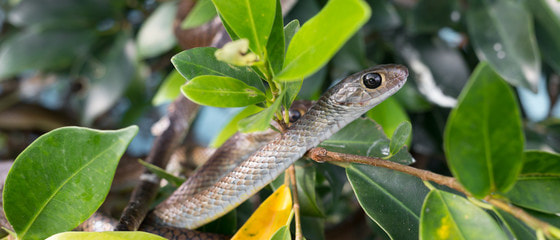
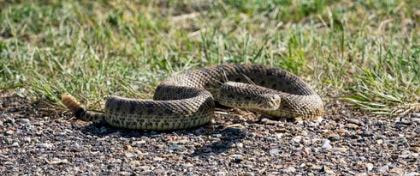
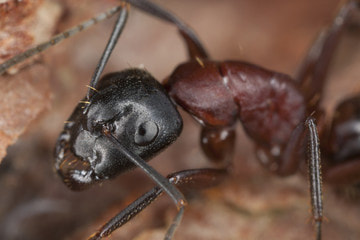

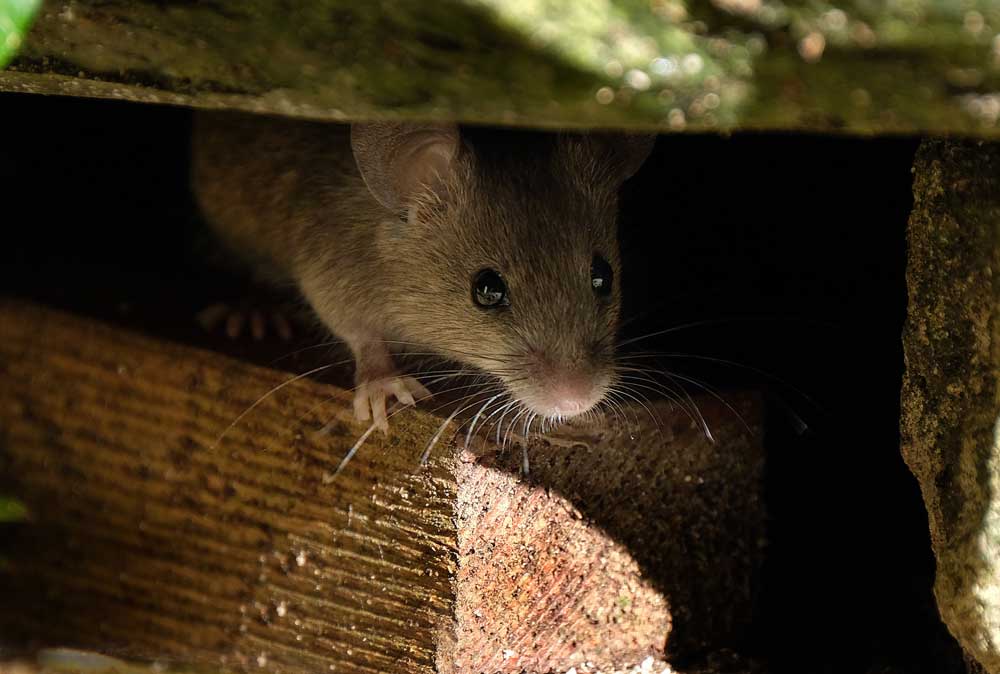

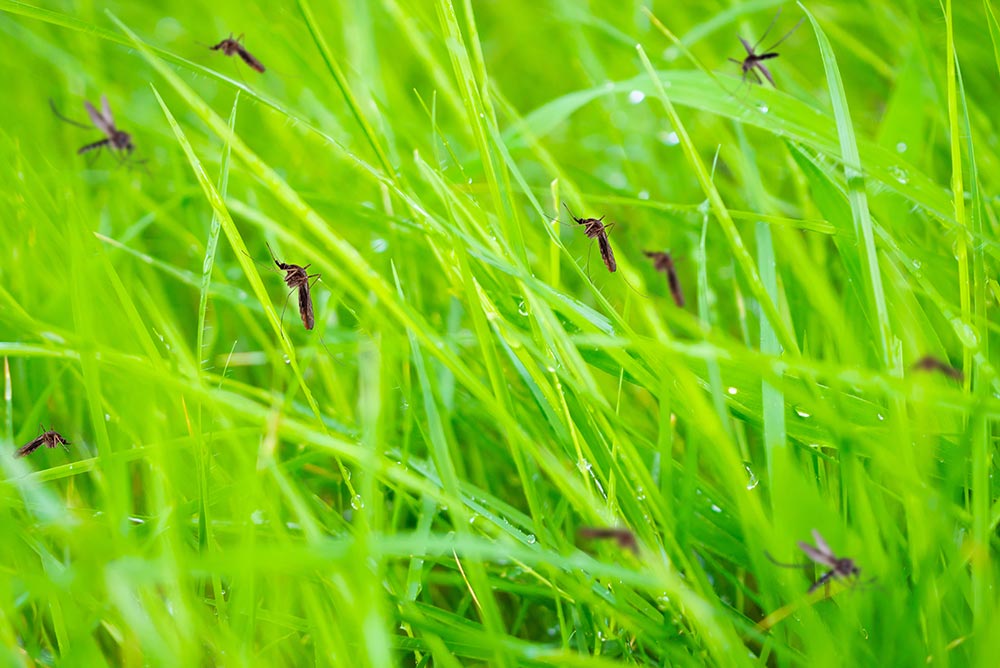
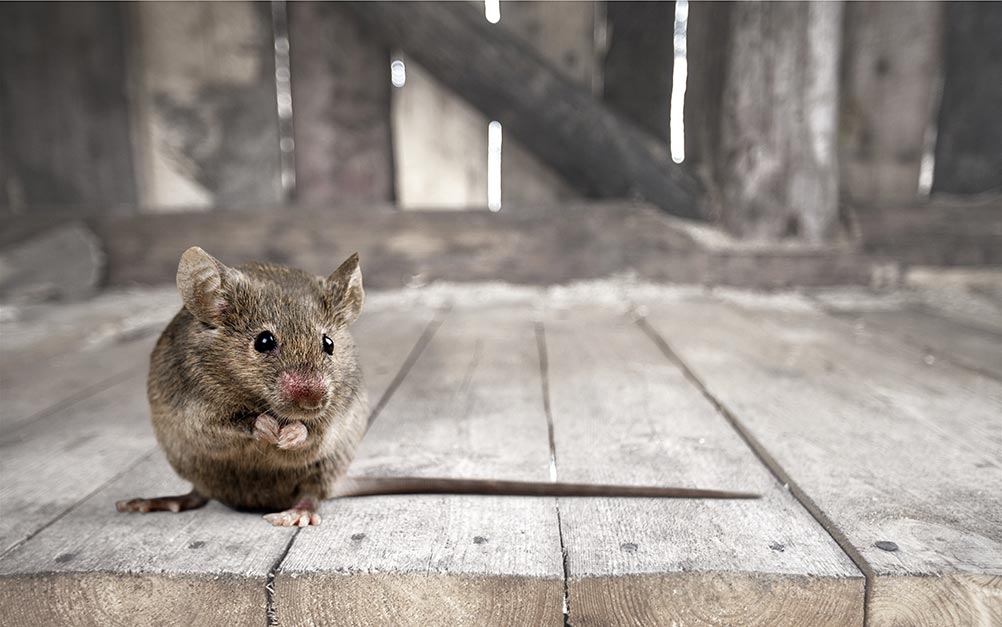
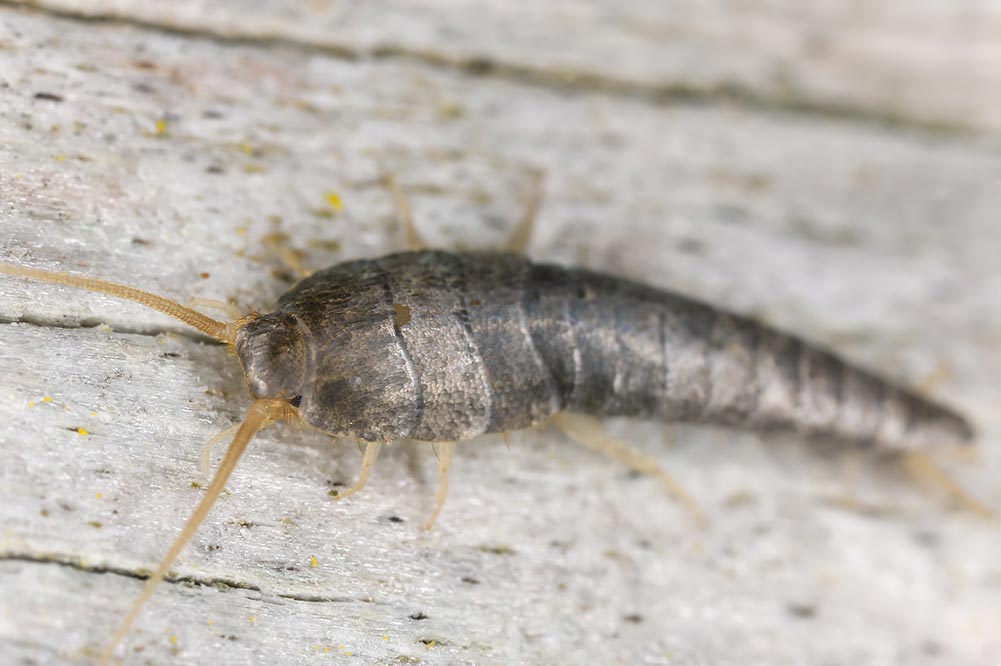
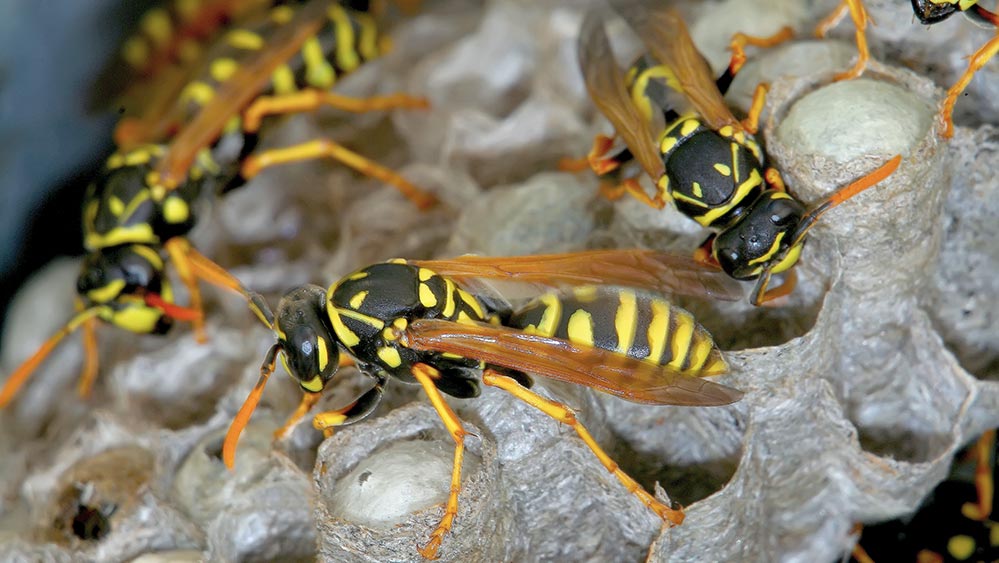

 RSS Feed
RSS Feed

